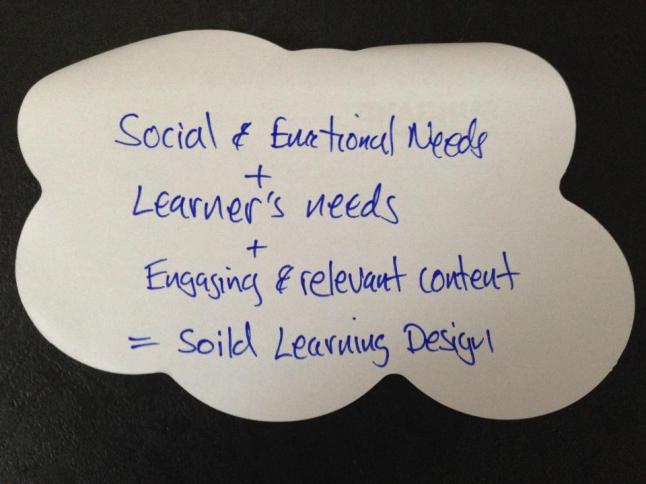In my latest #tiegrad class I was asked to think about, and reflect on, a misconception/misunderstanding about teaching and learning I have experienced, and how it has led to new insights and knowledge about my craft.
The biggest misconception/misunderstanding I have experienced since I started teaching in 2006 is the realization that learning cannot take place before the social and emotional needs of my students are met first. I used to think my role as an educator was to teach content to students based on a set of guidelines provided by the Ministry of Education, and students would attend class each day ready and able to learn – but I’ve learned the hard way that this is not always the case. Before I realized the importance of attending to the social and emotional needs of my learners, I tended to open the academic floods gates at the morning bell and get straight to work. I didn’t know any better. I assumed that my students were ready, willing, and able to learn. I couldn’t have been more wrong!
“Self-regulation is the ability to manage your own energy states, emotions, behaviours and attention, in ways that are socially acceptable and help achieve positive goals, such as maintaining good relationships, learning and maintaining wellbeing.” – Dr. Stuart Shankar.
The ability of my learners to self-regulate is an important part of meeting the social and emotional needs of my learners. Making time to explicitly teach skills around self-regulation (making our learners aware of conditions they need to be successful, teaching them how to deal with unexpected situations, and how to relate to others) has become increasingly important in today’s classrooms. The best learning design in the world cannot reach the dysregulated learner. One can design experiences, which engage students fully in the learning process, ask questions that lead to meaningful exploration of the topic, and allow time for students to follow their own line of inquiry, but unless we are able to decode our learners and understand their state of mind as they enter our classrooms we are fighting a losing battle.
Two Techniques To Attend To The Social and Emotional Needs Of Students:
1. Restorative Classroom Practices
By creating conditions where students feel safe to express their emotions and build community and support with their classmates, Restorative Classroom Practices can have positive effects on learner’s emotional needs. The simple act of gathering in a circle at the start of the school day, checking in with how we are feeling, creating a sense of equality, and giving a voice to every student, Restorative Classroom Practices have had positive and meaningful impact on the student’s classroom experience. Perhaps the biggest shift I have made over the years is that I have been able to shift decision making process from teacher to the students with remarkable success.
Using the latest research in neuroscience, MindUp curriculum provides educators with the tools to engage their learners in how the brain functions, what the optimum conditions for learning are, when the brain develops roadblocks for learning, and techniques to overcome these roadblocks. Many of my learners struggle to attend to the ‘present’ while in the classroom. They’re either reflecting on the past, or looking forward to the future, and this lack of attending to the present is having negative effects on their school experience. Creating a ‘mindful’ classroom is not just a buzzword of 21st Century learning. It is precisely because of the speed and the attention grabbing technological world we live in that students need to create time and space to disconnect, focus within, and calm their minds. A mindful classroom creates a space for the dysregulated learner to find comfort and a sense of belonging.
